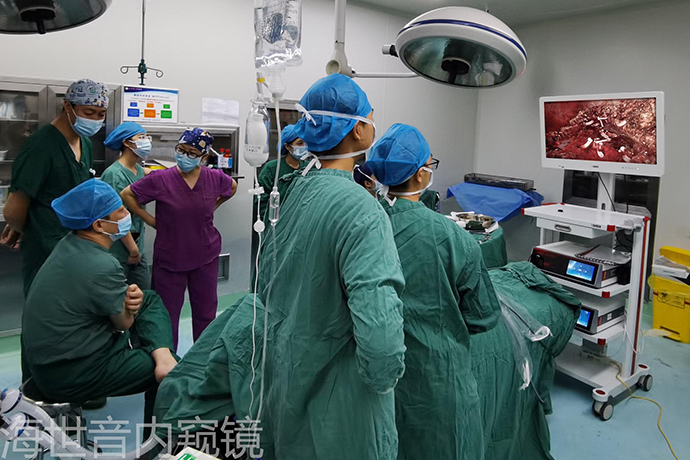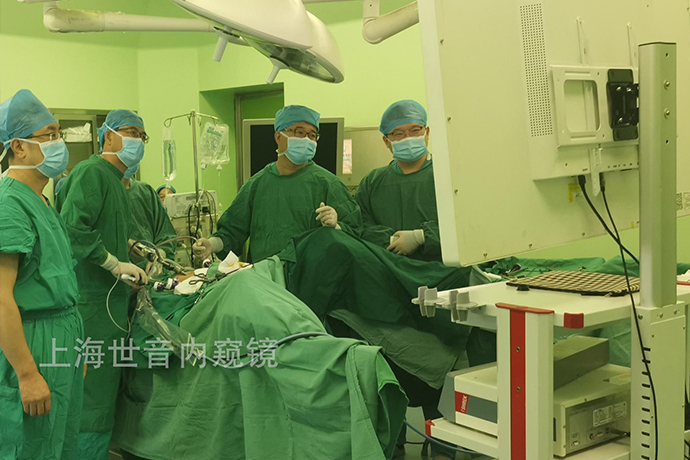[Laparoscopic Hepatobiliary Surgery] Hepatic Hemangioma Resection
Release time: 06 Dec 2022 Author:Shrek
Hepatic hemangioma is a benign tumor originating in the liver, the most common of which is hepatic cavernous hemangioma, which is more common in middle-aged women. It is a mass-like structure formed by a large number of arteriovenous malformations in the liver. It is similar to the shape of a sponge. When it is filled with blood, it will be in a state of swelling and high tension. If the blood is blocked, it will appear very small. The state is like the state where the sponge is full of water and the water is squeezed out.

Hepatic hemangiomas contain a large number of arteriovenous malformations, which are actually neoplastic lesions formed by blood vessels. If there is no corresponding substantial vascular tissue, they are usually relatively small. Hepatic hemangiomas generally do not become cancerous and grow slowly. Most of the hemangiomas are relatively small in size, below 2cm. Most of them are single, and only a few can be multiple. They usually grow during reexamination and follow-up Also slower.
Basis of Laparoscopic Hepatic Hemangioma Resection
(1) Hepatic hemangioma is a benign lesion, as long as the lesion is removed, the therapeutic purpose can be achieved, and extensive or regular hepatectomy is not necessary;
(2) Due to the expansive growth of most hemangiomas, the hepatic parenchyma and its blood vessels and bile ducts are squeezed to form a loose gap between the capsule and the hepatic parenchyma, which is easy to peel off;
(3) The main blood supply of hemangioma comes from the hepatic artery, and the secondary comes from the portal vein. There are few regular Glisson pedicles, and most of them are supplied by 1-3 perforating vessels. However, blocking the Glisson pedicle of the hepatic lobe where the hemangioma is located can make The hemangioma shrinks and becomes soft, and it is easier to dissect and handle the blood supply vessels during hemangioma resection.
Advantages of laparoscopic surgery
Laparoscopic surgery for hepatic hemangioma cases is gradually increasing. Numerous studies have shown that the "keyhole" surgery is safe and reliable, suitable for clinical use, and has the following advantages:
1. Less trauma and less pain. The incision of laparoscopic surgery is small, so the damage is small and the change of internal organ anatomy is small. Studies have shown that patients who undergo laparoscopic surgery experience significantly less pain than patients who undergo laparotomy.
2.Quick recovery and less complications. Laparoscopic surgery has less trauma, less postoperative pain, and less use of morphine drugs. You can get out of bed on the day of surgery, eat on the same day, and generally stay in hospital for 3-4 days. The small incision is not only conducive to postoperative recovery, but also the probability of postoperative adhesion is significantly lower than that of laparotomy, which reduces the occurrence of postoperative complications and improves the quality of life of patients.
3. Beautiful. With the progress of the times, more and more patients, especially young women, require postoperative beauty, and laparoscopic surgery is the perfect response to this requirement.
4. Cost economy. Many patients consider laparoscopic surgery to be expensive. In fact, although the material cost and operation cost of laparoscopic surgery are higher than those of laparotomy, due to the quicker recovery of patients, shorter hospital stay, and reduced postoperative expenses, the total hospitalization expenses are almost the same as laparotomy expenses. Fees are also greatly reduced. Visible, laparoscopic surgery is more economical.
Surgical experts remind: hepatic hemangioma is very harmful, not only affecting life, but also causing other diseases that cannot be ignored in patients with hepatic hemangioma. Therefore, we should pay attention to hepatic hemangioma and choose a professional surgeon. The hospital accepts formal examination and treatment.
Preoperative 3D reconstruction clearly showed the positional relationship between the tumor and intrahepatic blood vessels. Intraoperative ultrasound accurately positioned the boundary of the tumor. The ultrasonic knife cut off the liver parenchyma along the marked resection line. After the tumor was resected, three important veins were completely exposed on the liver wound. In order to avoid bleeding during the operation, the left hepatic artery was first blocked with a temporary non-invasive vascular blocking forceps, the hepatic hemangioma was resected with an ultrasonic knife, and gel sponge was used for hemostasis on the visceral section.
The hepatic hemangioma was completely resected within 30 minutes, and no obvious ischemic necrosis zone was seen on the surface of the liver after the temporary non-invasive vascular clamp was released, and the total blood loss was about 50ml.

- Recommended news
- 【General Surgery Laparoscopy】Cholecystectomy
- Surgery Steps of Hysteroscopy for Intrauterine Adhesion
- [Gynecological Hysteroscopy] Techniques for Preventing and Treating Complications of Hysteroscopic Surgery
- [Gynecological Hysteroscopy] Hysteroscopic Adhesiolysis
- [Gynecological Hysteroscopy] IUD Removal under Hysteroscopy